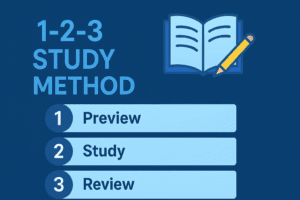The Things in Instructions That Really Get Followed by Others ?
Table of Contents
Instructions That Really Get Followed
The Secret to Instructions That Actually Get Followed: Keep It Simple!
Ever tried to follow a recipe or assemble furniture, only to end up more confused than when you started? We’ve all been there! The problem often isn’t you, it’s the instructions.
Good instructions are like a friendly guide: they show you the way without getting you lost in a maze of words. Whether you’re writing a quick email, a how-to guide, or even a note for a family member, making your instructions clear and easy to understand is a superpower.
So, how do you do it? Let’s break down the simple rules that make a big difference.
1. Speak Simply: Use Plain Language
Imagine you’re explaining something to a friend who’s new to the topic. Would you use fancy, technical words? Probably not!
- Avoid jargon: Words like “synergize,” “leverage,” or “optimize” might sound smart, but they can confuse more than they clarify. Stick to everyday words.
- If you must use a technical term, explain it: For example, instead of just saying “calibrate the sensor,” you might say, “calibrate the sensor (which means to adjust it for accurate readings).”
The goal: Your reader shouldn’t need a dictionary to understand what you mean.
2. One Idea, One Sentence
This is perhaps the biggest secret to clarity! When you cram too many thoughts into a single sentence, it’s like trying to listen to three people talk at once – your brain just shuts down.
- Bad Example: “Take the main component and then carefully align it with the pre-drilled holes, making sure the screws are tightened securely but not over-tightened, so you don’t strip the threads.”
- Good Example:
- “Take the main component.”
- “Align it with the pre-drilled holes.”
- “Insert the screws.”
- “Tighten them securely.”
- “Be careful not to over-tighten, or you might strip the threads.”
See the difference? Each step is a bite-sized piece of information that’s easy to process.
3. Short Paragraphs Are Your Friend
Just like long sentences can be overwhelming, big blocks of text can make a reader’s eyes glaze over.
- Break it up: Aim for paragraphs that are just a few sentences long, or even just one sentence if it’s a key instruction.
- Use bullet points and numbered lists: These are fantastic for instructions because they naturally break down information into easy-to-digest chunks.
Remember: White space on the page is good! It makes your text less intimidating and more inviting to read.

4. Anticipate Questions (and Answer Them!)
Put yourself in your reader’s shoes. As you write, imagine them asking:
- “What tool do I use?”
- “Which way does this go?”
- “What if it doesn’t fit?”
- “What do I do next if [X] happens?”
If you can think of a question, chances are your reader will too. Address these potential sticking points directly in your instructions.
- Example: If you’re telling someone to click a button, you might add, “(It’s the green one on the top right.)” or “If the button isn’t visible, scroll down.”
A little extra clarification goes a long way in preventing frustration.
The Takeaway: Be a Clear Communicator
Writing clear, concise instructions isn’t just about being a good writer; it’s about being a good communicator. By embracing simplicity, breaking down your thoughts, and thinking like your reader, you’ll ensure your instructions are not just read, but actually followed.
Give these tips a try, and watch how much smoother things become!
Okay, here are some Frequently Asked Questions (FAQs) and their answers for the blog post titled “The Secret to Instructions That Actually Get Followed: Keep It Simple!”
FAQs: Writing Clear, Concise Instructions
Q1: Why is it so important to write clear, concise instructions? A1: Clear and concise instructions are crucial because they ensure your message is understood quickly and correctly. This saves time, reduces frustration, prevents errors, and ultimately helps people successfully complete the task you’re describing, whether it’s assembling furniture, following a recipe, or completing a work task.
Q2: What’s the biggest mistake people make when writing instructions? A2: One of the biggest mistakes is trying to pack too much information into a single sentence or a long, dense paragraph. This overwhelms the reader and makes it hard for them to identify the key actions they need to take. Overusing jargon or technical terms without explanation is another common pitfall.
Q3: How can I make sure my language is “plain language” and avoids jargon? A3: Imagine you’re explaining the task to someone who has no prior knowledge of the subject. Use everyday words, short sentences, and avoid industry-specific terms unless they are absolutely necessary and you’ve provided a simple explanation for them right away. Reading your instructions aloud can also help you spot overly complicated phrases.
Q4: You mentioned “one idea per sentence.” Can you give another example of this? A4: Certainly!
- Instead of: “After you’ve carefully detached the front panel, you should then proceed to gently clean any accumulated dust from the interior, using a soft, dry cloth, before reattaching it securely.”
- Try this:
- “Carefully detach the front panel.”
- “Gently clean any dust from the interior.”
- “Use a soft, dry cloth.”
- “Reattach the panel securely.”
Each sentence delivers a single, actionable instruction, making it much easier to follow.
Q5: My instructions are for a technical audience. Do I still need to avoid jargon and keep paragraphs short? A5: Even with a technical audience, clarity is king. While you might use specific technical terms they do understand, you should still strive for conciseness and avoid overly complex sentence structures. Short paragraphs, bullet points, and numbered lists remain highly effective for breaking down complex information into digestible parts, even for experts. They appreciate efficiency!
Q6: How can I “anticipate questions” when I’m writing? A6: The best way is to put yourself in your reader’s shoes. As you write each step, pause and think: * “What might confuse them here?” * “What tool might they forget?” * “What’s a common mistake someone might make at this point?” * “What if something doesn’t look exactly as I describe it?” Consider trying out your own instructions from scratch, or have someone unfamiliar with the task try to follow them. Their questions will reveal where you need to add more clarification. Sources








